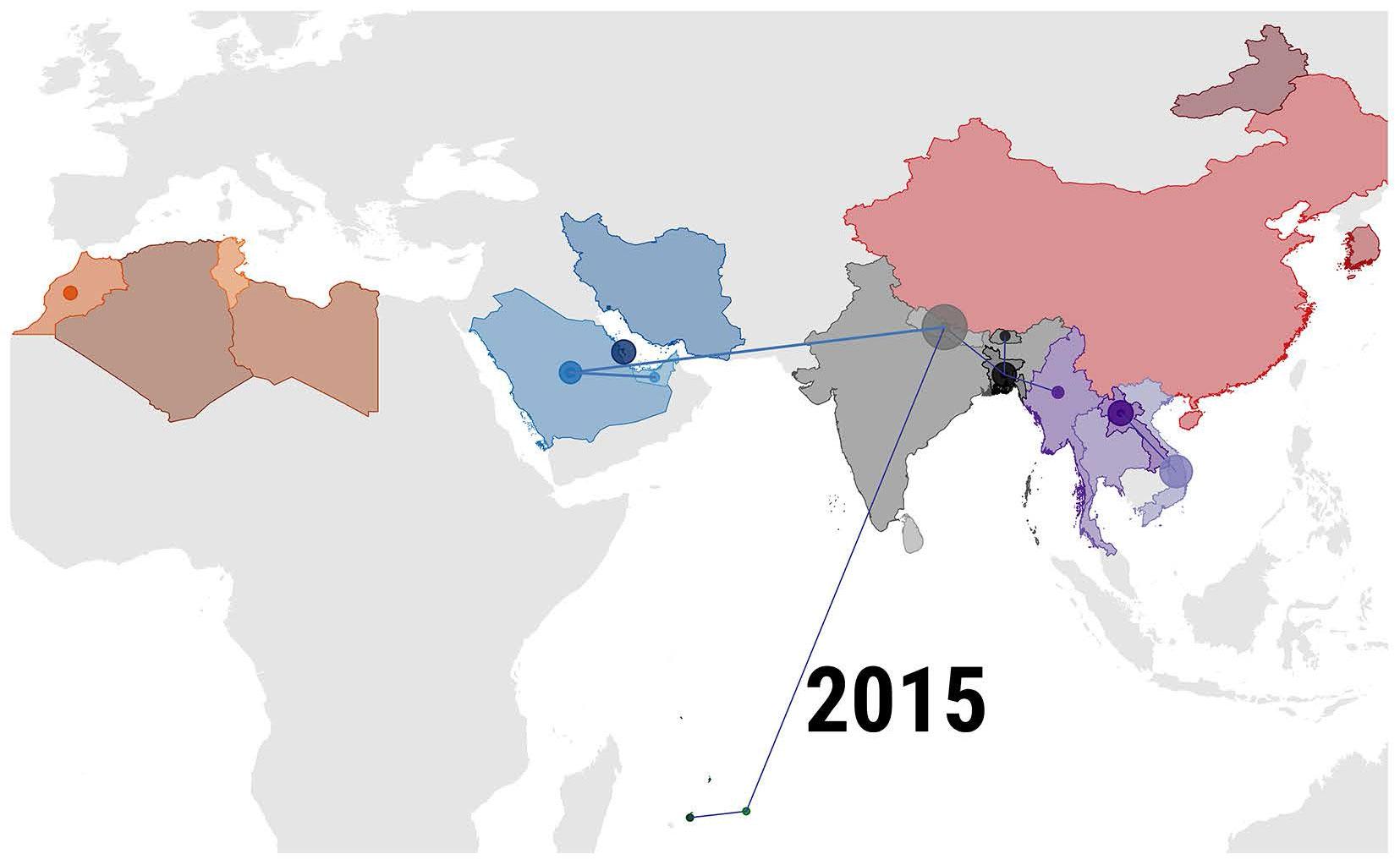Scientists from The Pirbright Institute have used state-of-the-art approaches to monitor foot-and-mouth disease (FMD) outbreaks that have recently radiated out from the Indian subcontinent.
The seven different types of FMD virus (called serotypes) can be split further into lineages which normally exist in specific geographical areas or ‘pools’. Over the past five years, the geographical range of a serotype O lineage, named Ind-2001, has dramatically expanded into many countries in Asia and North Africa.
Pirbright researchers from the World Reference Laboratory for FMD have collaborated with 15 international organisations to analyse 424 genetic sequences of Ind-2001 viruses (including the complete genome of 74 different virus isolates) to reconstruct the spread of Ind-2001 and determine how their genetic makeup changed over time and across continents.
Their study, published in Scientific Reports, found that there were two distinct Ind-2001 sublineages which escaped from the subcontinent. The first, Ind-2001d, made separate jumps to the Middle East, North Africa and Southeast Asia, establishing new centres of infection. A second escapee, Ind-2001e, has followed a similar pattern since 2015, replacing the Ind-2001d sublineage in all but a few areas (e.g. North Africa).
In addition to understanding how frequently this sublineage has escaped the Indian subcontinent, in depth genetic analysis allowed the team to show that some Ind-2001d viruses had regions in their genome which were of a different genetic origin, suggesting at one stage an animal was co-infected with at least two different FMD viruses that swapped genetic material. This so called “recombination event” prevented scientists from accurately interpreting FMD virus movements.
“The explosive spread of the Ind-2001 viruses constitutes a substantial change to the current distribution of FMD viruses globally and poses a threat of disease introduction to FMD-free countries. Our work analysing FMD genomes will enable us to track outbreaks with more precision, and adds to our understanding of the genetic makeup of FMD viruses”, said Dr Kasia Bachanek-Bankowska, lead author of the research at Pirbright. “Although these events are relatively rare, we need to remember that the 2001 FMD epidemic in the UK was caused by an FMD virus with a similar origin.”
